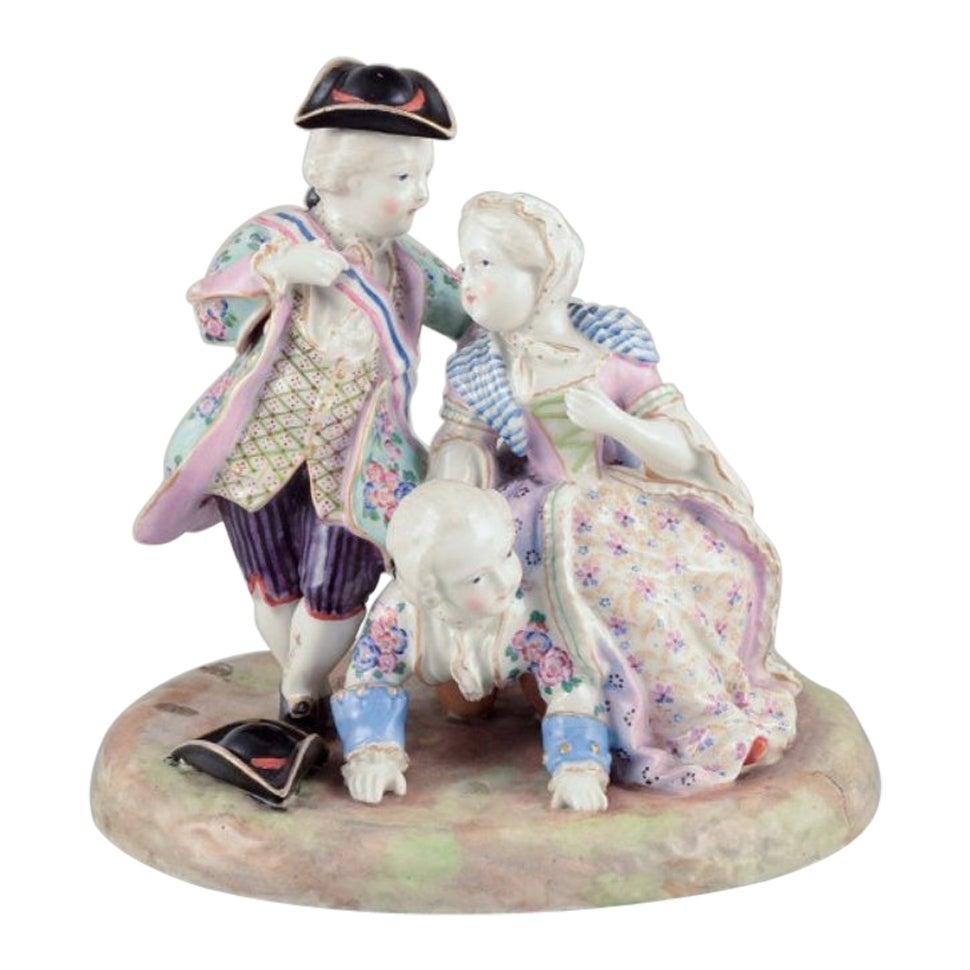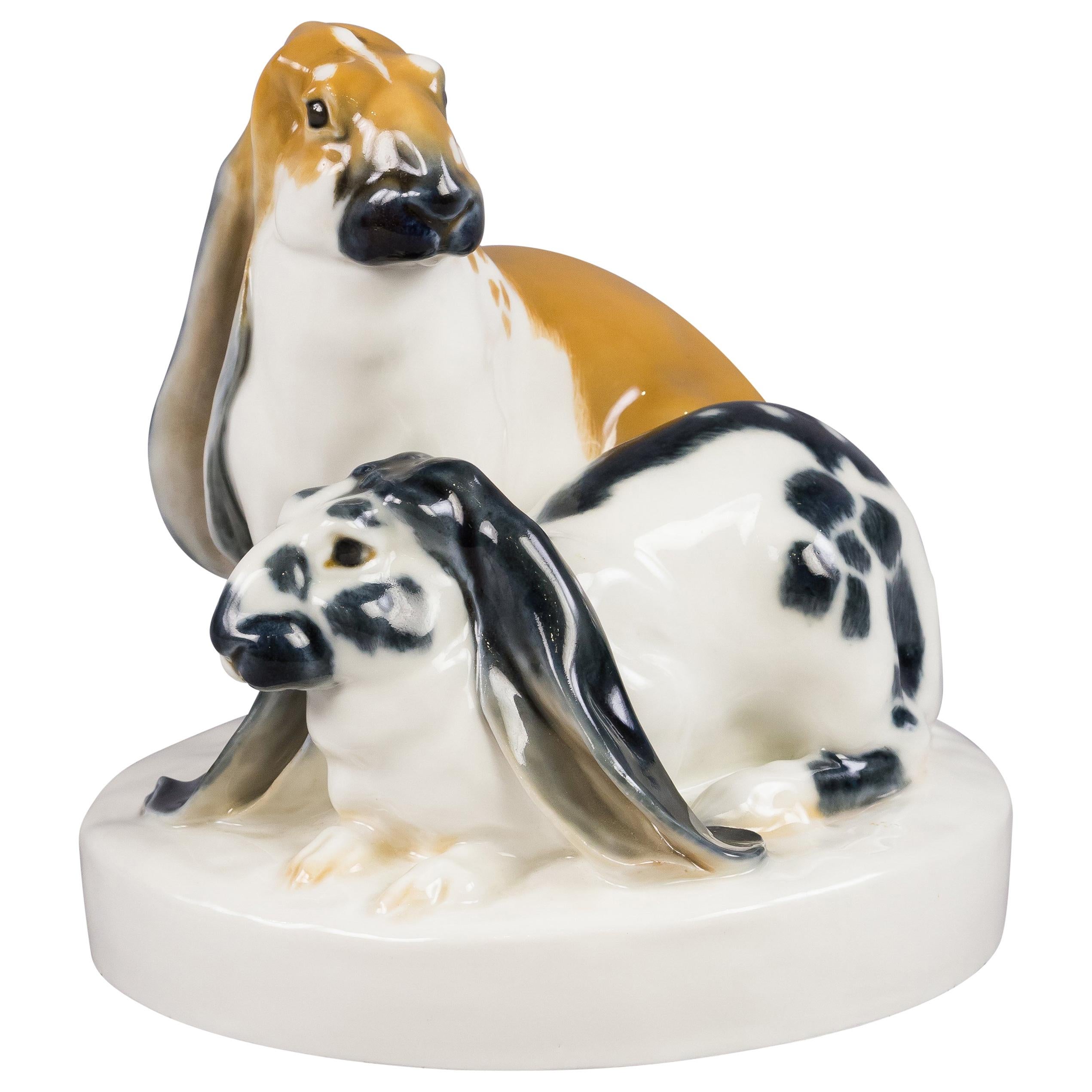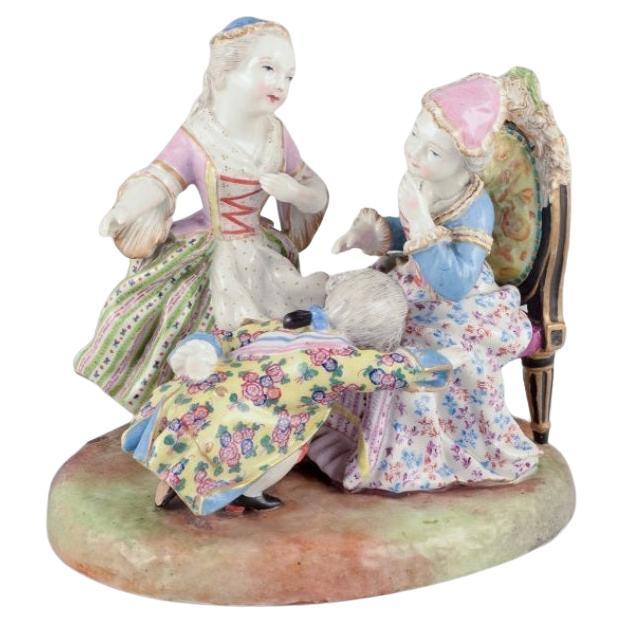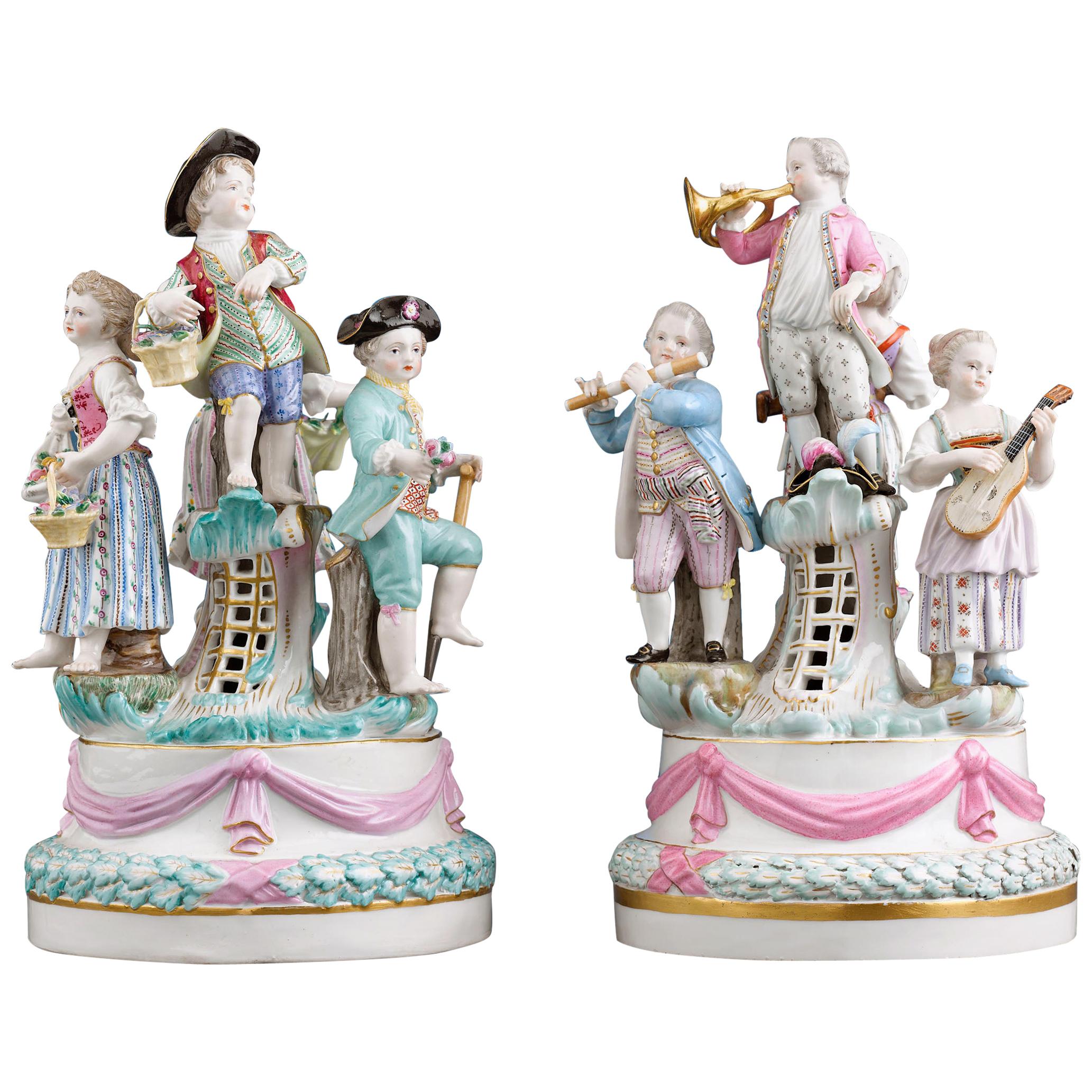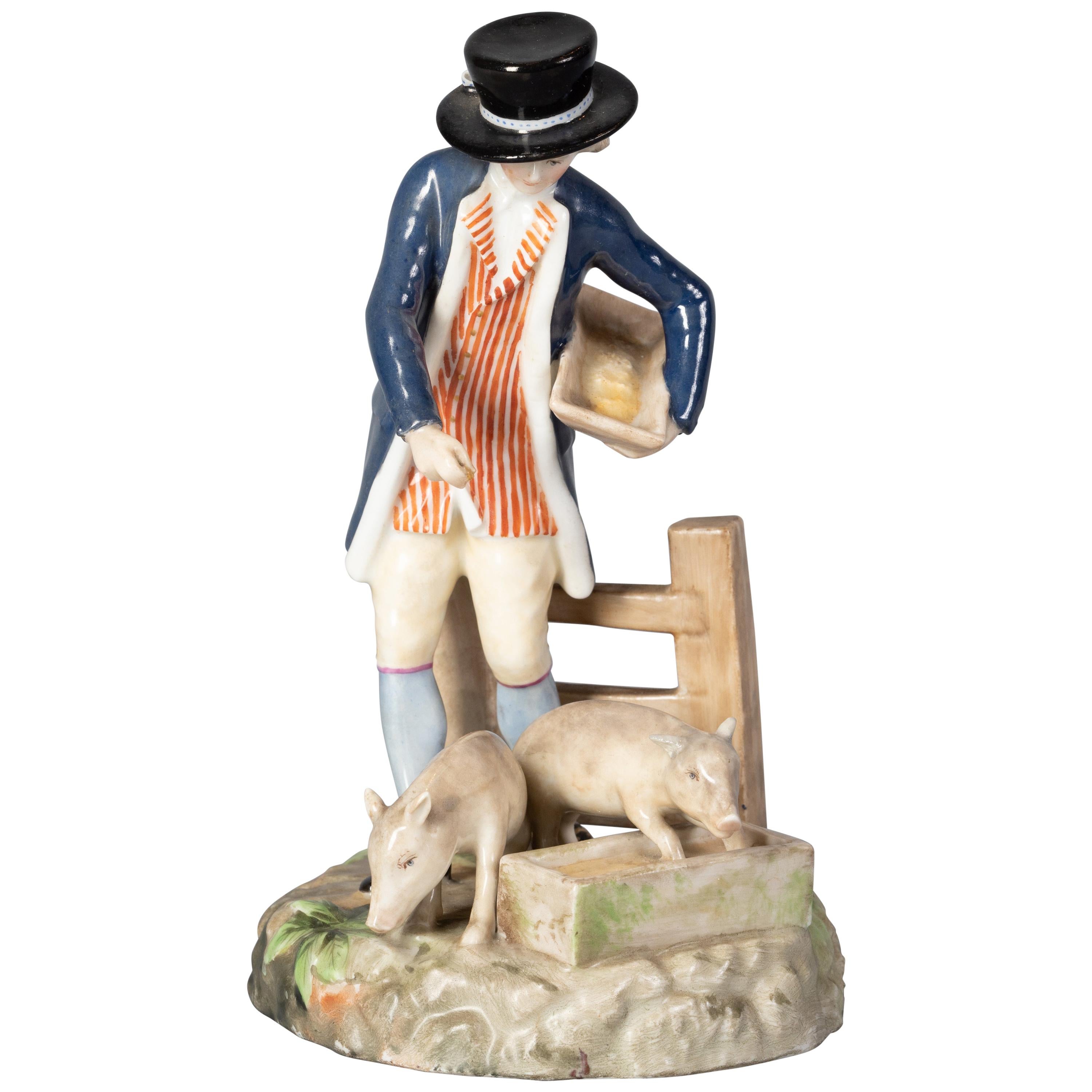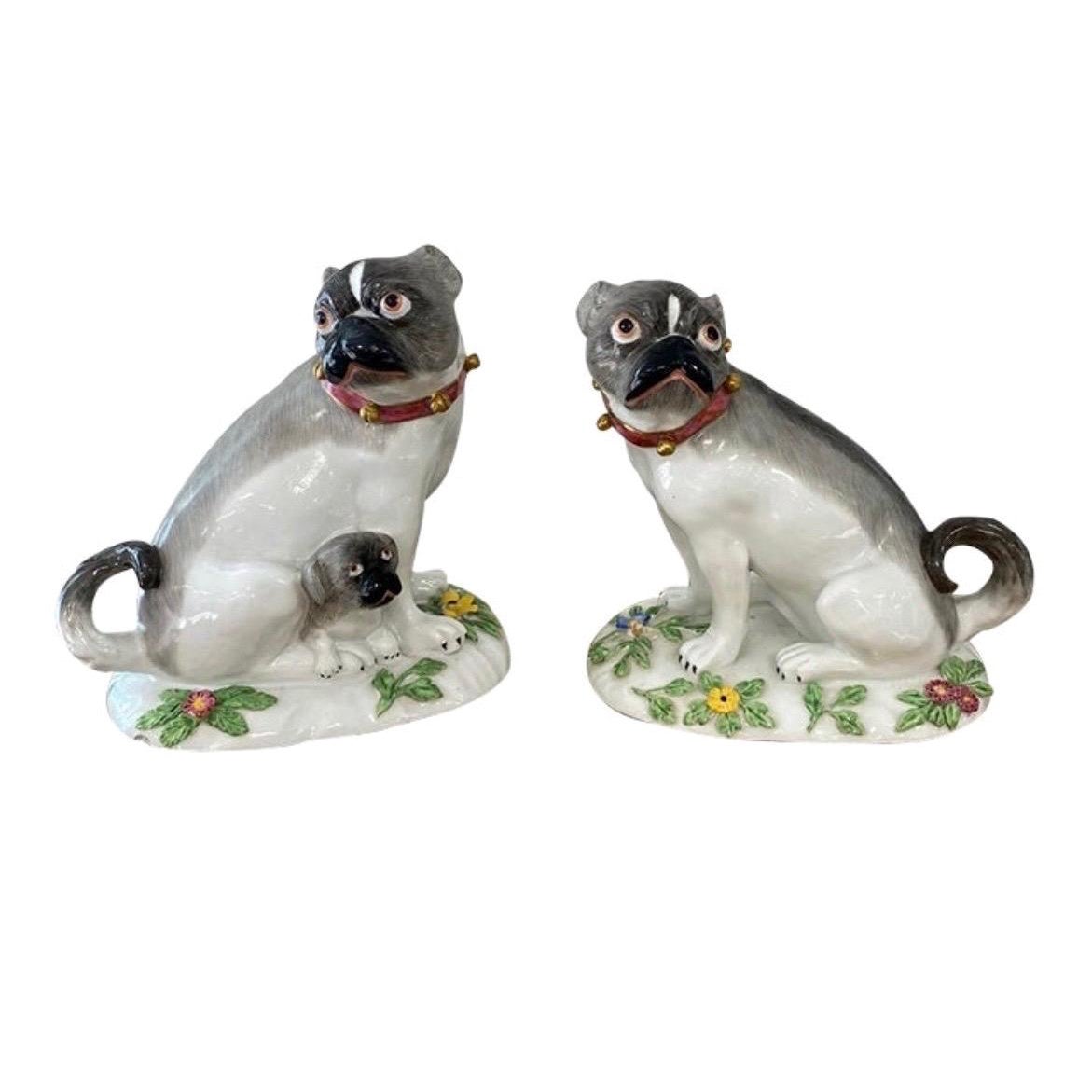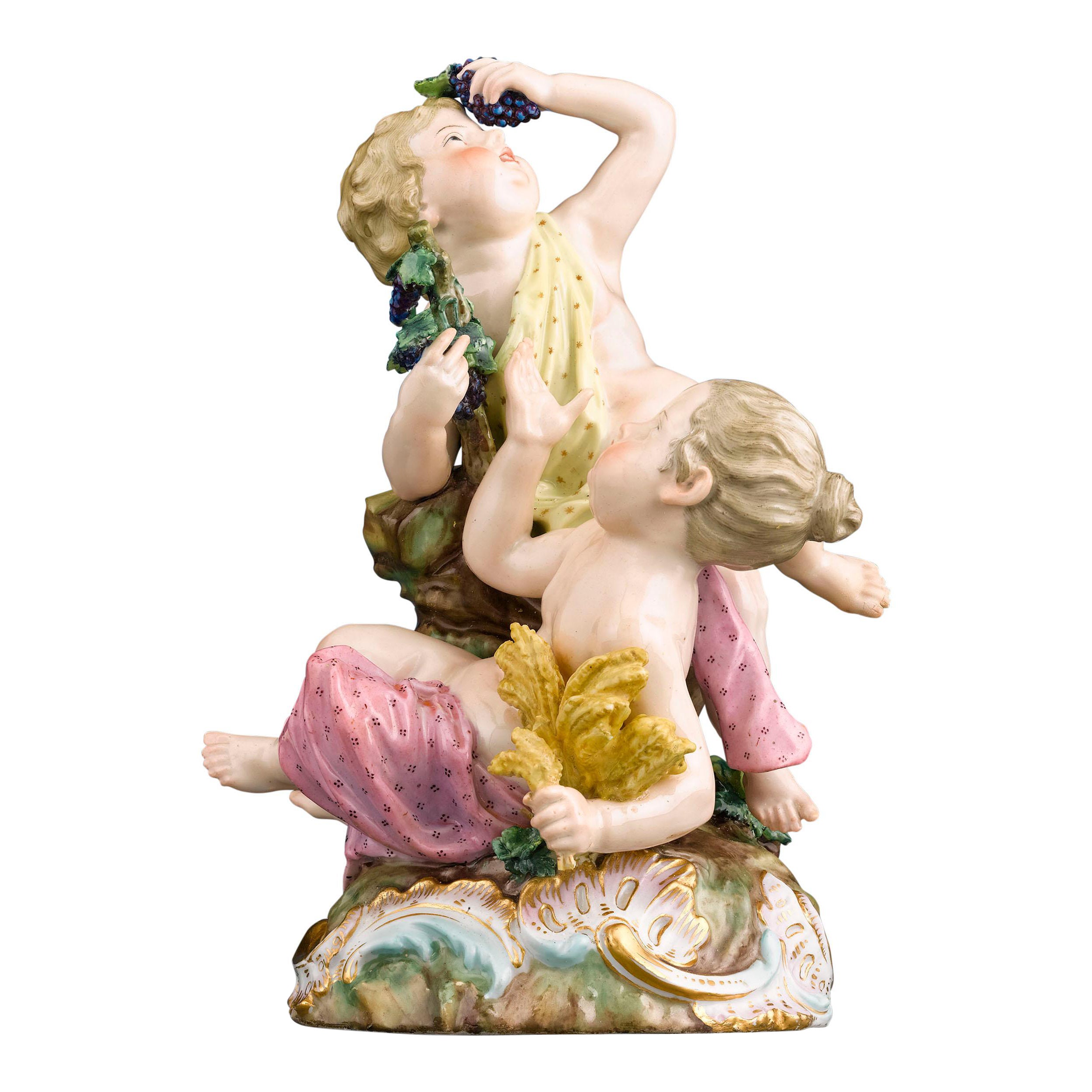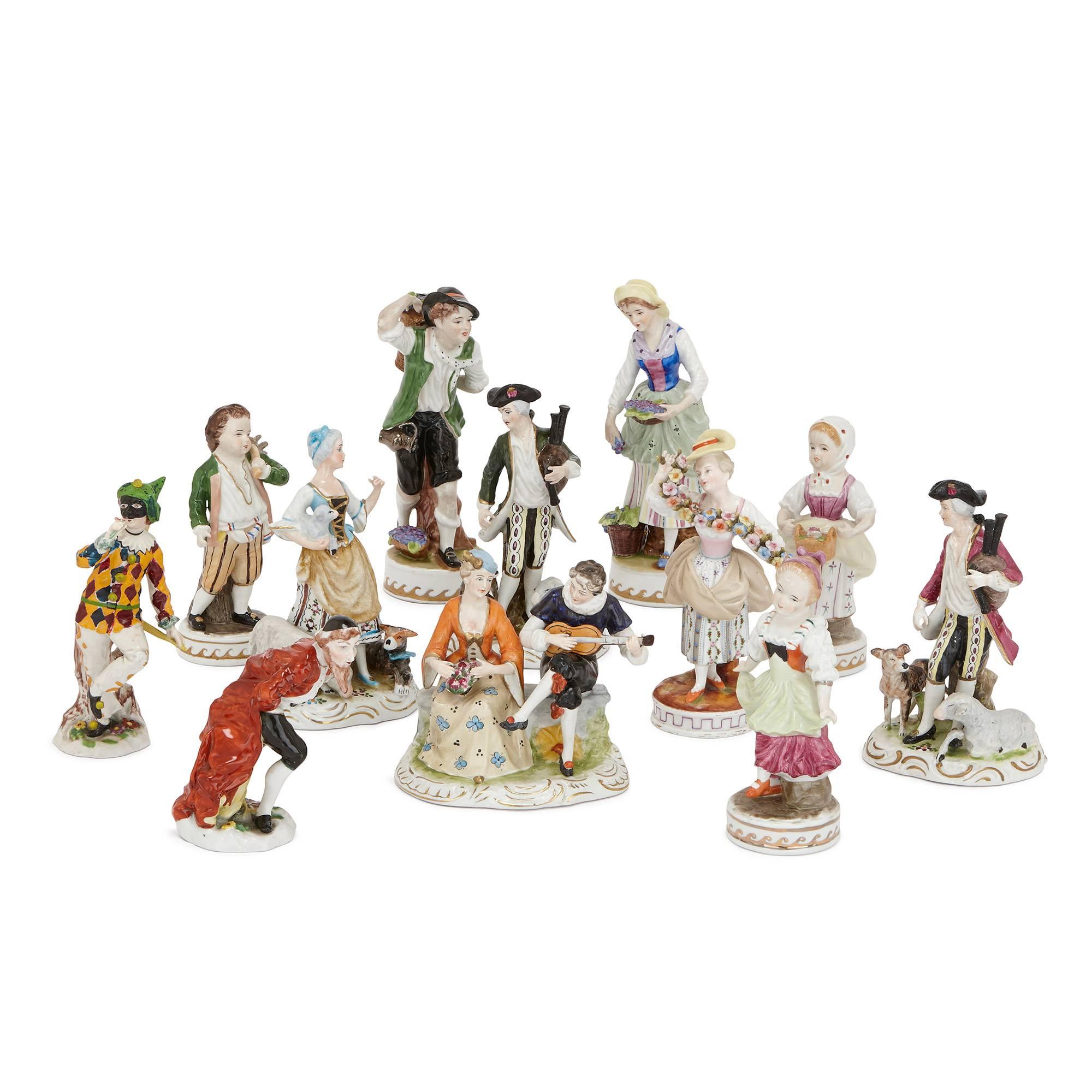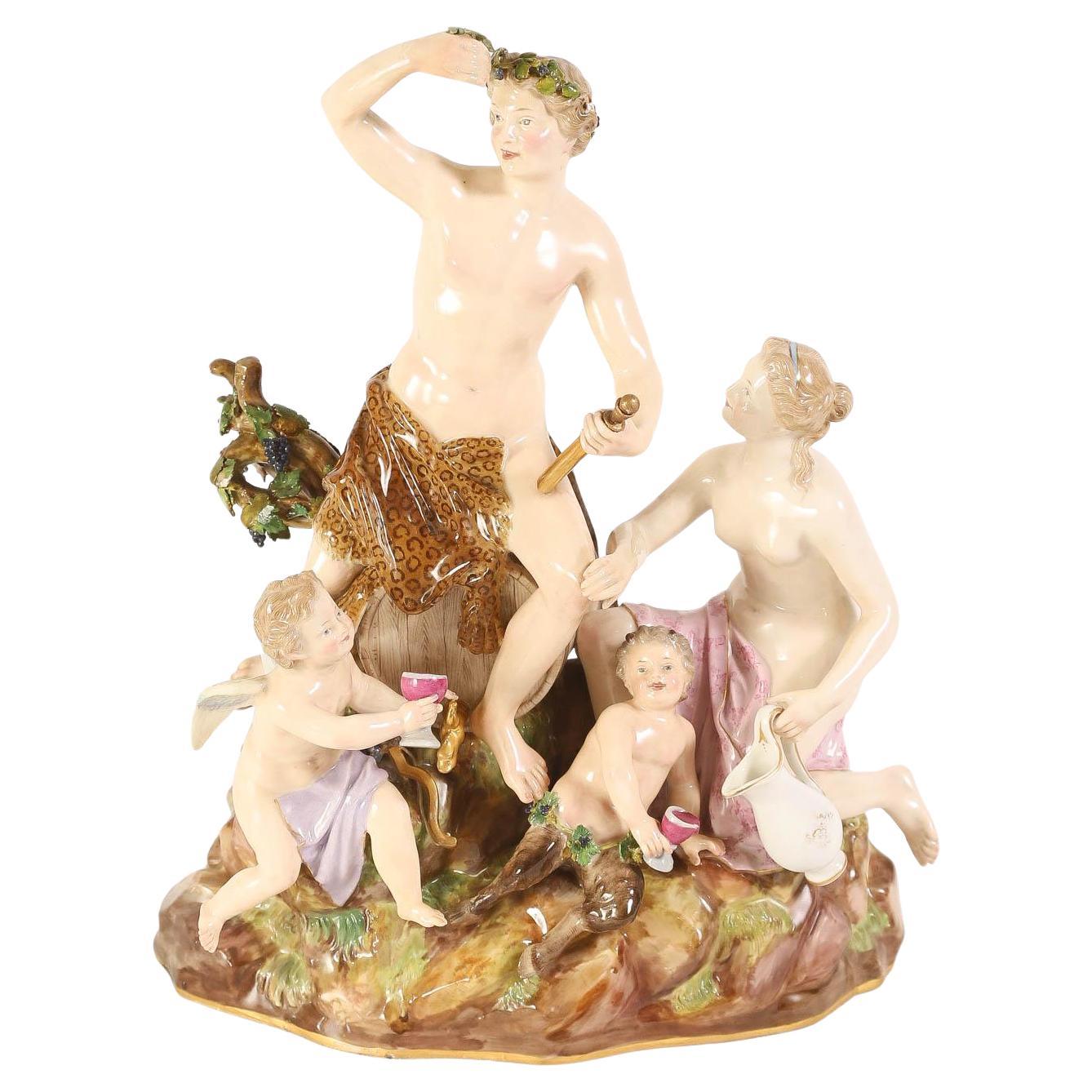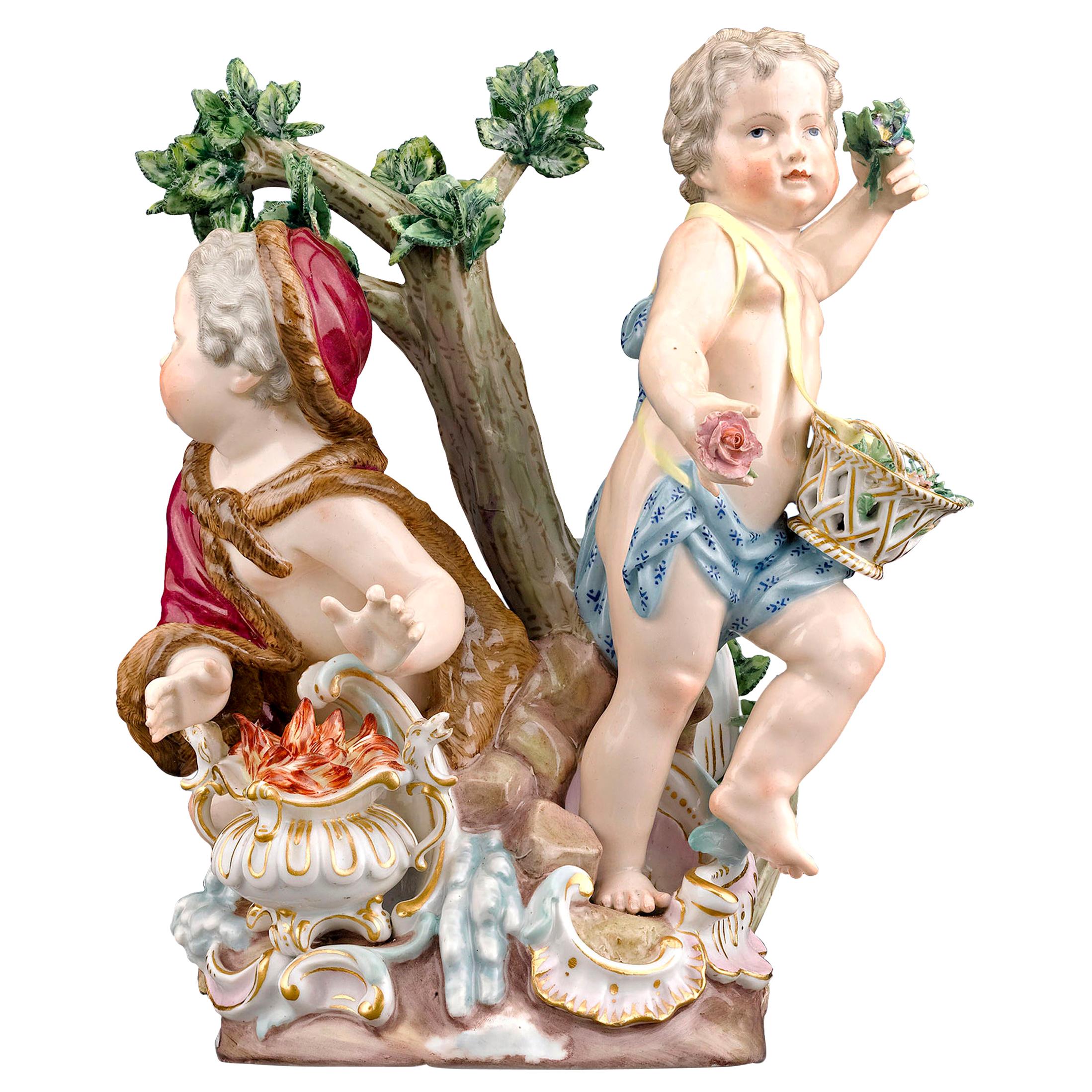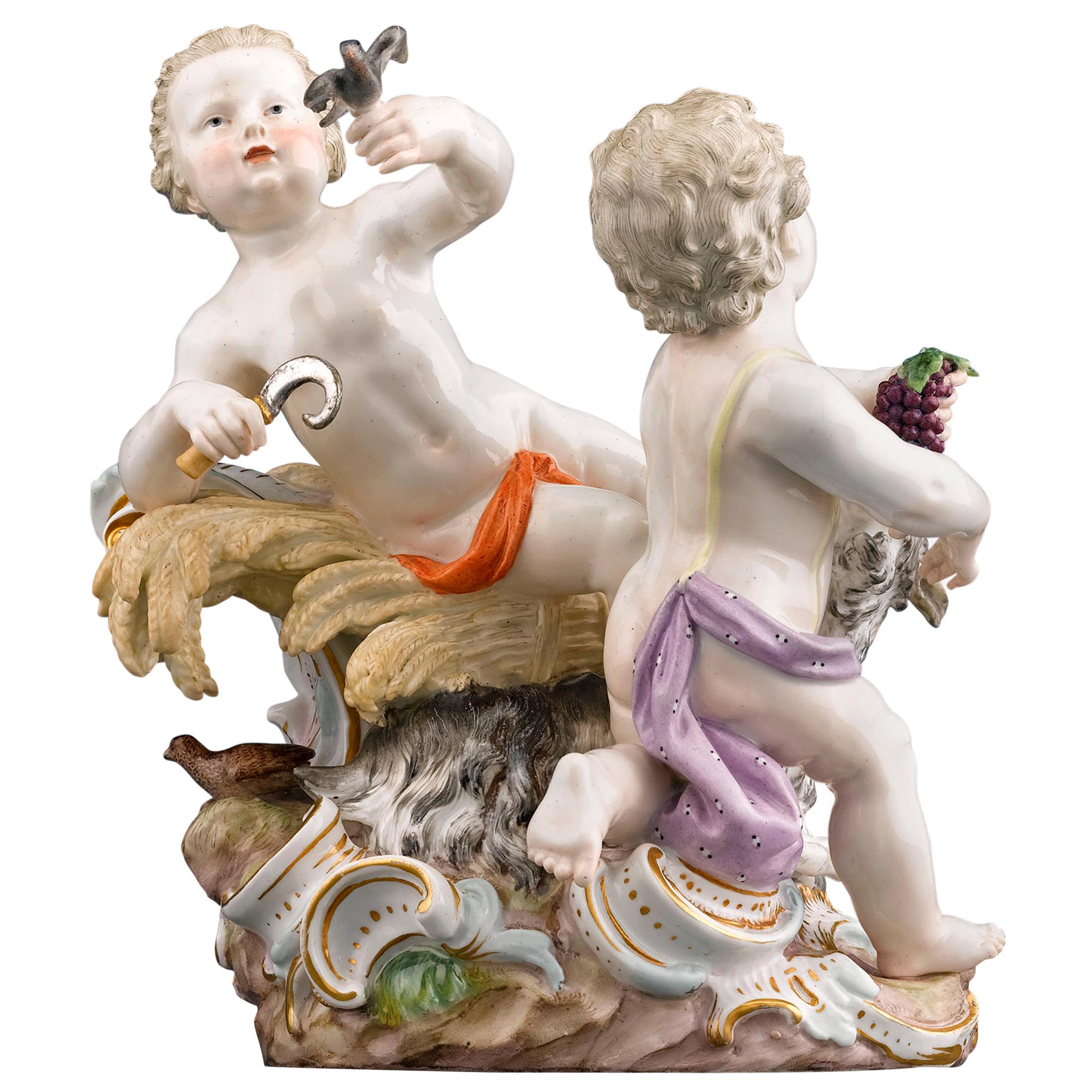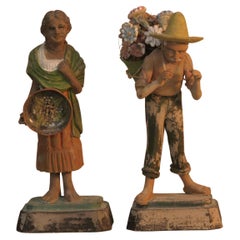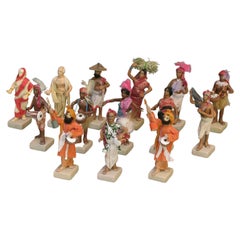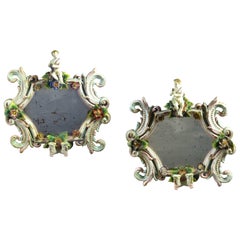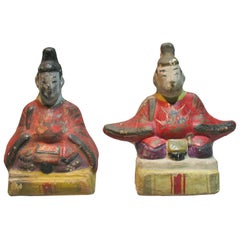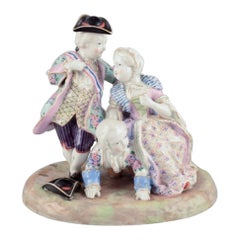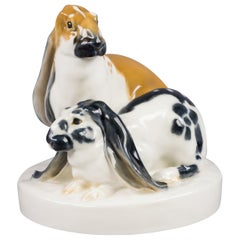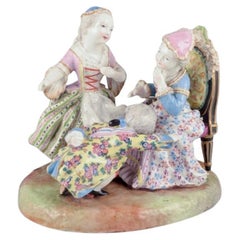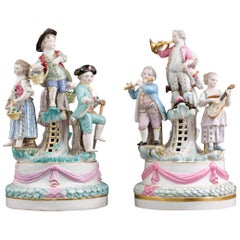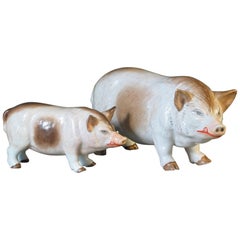
Group of Two Rare Meissen Style Porcelain Figures of Pig Sow and Piglet
View Similar Items
Want more images or videos?
Request additional images or videos from the seller
1 of 13
Group of Two Rare Meissen Style Porcelain Figures of Pig Sow and Piglet
Price:$1,250
$1,450List Price
About the Item
- Attributed to:Ernst Bohne Söhne (Maker)
- Dimensions:Height: 8 in (20.32 cm)Width: 3.75 in (9.53 cm)Depth: 1.5 in (3.81 cm)
- Style:Victorian (Of the Period)
- Materials and Techniques:
- Place of Origin:
- Period:
- Date of Manufacture:19th Century
- Condition:Wear consistent with age and use.
- Seller Location:Ottawa, CA
- Reference Number:1stDibs: LU1417210555083
About the Seller
5.0
Gold Seller
Premium sellers maintaining a 4.3+ rating and 24-hour response times
Established in 1989
1stDibs seller since 2015
458 sales on 1stDibs
Typical response time: 1 hour
Authenticity Guarantee
In the unlikely event there’s an issue with an item’s authenticity, contact us within 1 year for a full refund. DetailsMoney-Back Guarantee
If your item is not as described, is damaged in transit, or does not arrive, contact us within 7 days for a full refund. Details24-Hour Cancellation
You have a 24-hour grace period in which to reconsider your purchase, with no questions asked.Vetted Professional Sellers
Our world-class sellers must adhere to strict standards for service and quality, maintaining the integrity of our listings.Price-Match Guarantee
If you find that a seller listed the same item for a lower price elsewhere, we’ll match it.Trusted Global Delivery
Our best-in-class carrier network provides specialized shipping options worldwide, including custom delivery.More From This Seller
View AllLot of Two Indian Terracotta Figures
Located in Ottawa, Ontario
Lot of two Indian terracotta figures.
Lucknow, India, 19th Century.
Painted terracotta figures, depicting a female pottery seller
and a male flow...
Category
Antique 19th Century Indian Tribal Figurative Sculptures
Materials
Terracotta
Group of Fourteen Indian Painted Terracotta & Cotton Dressed Figures
Located in Ottawa, Ontario
A group of fourteen Indian painted terracotta
and cotton dressed figures
Krishnanagar, West Bengal, 20th century
Mounted on square bases,
depicting mainly processional figur...
Category
20th Century Indian Tribal Figurative Sculptures
Materials
Terracotta
Pair of Thuringian Meissen-style Porcelain Two-Light Mirror Grinadoles Ca. 1870
Located in Ottawa, Ontario
A pair of Thuringian Meissen-style porcelain two-light mirror Girandoles
Circa 1870, probably Wallendorf
Each of hexagonal-shape with foliate scrolls
and rocaille borders, embe...
Category
Antique Late 19th Century German Other Wall Mirrors
Materials
Porcelain
Two Rare Japanese Izumo Clay Dolls of Emperor and Tenjin, Meiji Period
Located in Ottawa, Ontario
Two rare Japanese Izumo clay dolls of Emperor and Tenjin, Nara Prefecture, Meiji period. Material and simple execution impart a flavor of antiquity and great decorative power. Empero...
Category
Antique Late 19th Century Japanese Meiji Sculptures and Carvings
Materials
Clay
Pair of Blanc-de-Chine Dehua Figures of Guanyin
Located in Ottawa, Ontario
A Pair Of Blanc - De - Chine Dehua
Figures Of Guanyin
Early 20th century
Each figure is modelled standing in flowing robes
upon a lotus leaf decorated stand,
holding a fl...
Category
Early 20th Century Chinese Chinese Export Figurative Sculptures
Materials
Porcelain
Lot of Three Indian Terracotta Processional Figures
Located in Ottawa, Ontario
Lot of three Indian terracotta processional figures.
Krishnanagar, Bengal, 19th Century.
Painted terracotta figures, depicting two males and one female musician...
Category
Antique 19th Century Indian Tribal Figurative Sculptures
Materials
Terracotta
You May Also Like
Meissen. Large and impressive porcelain group of noble figures. Gallant scene
Located in København, Copenhagen
Meissen, Germany.
Large and impressive porcelain group of the noble figures. Gallant scene
19th century.
Overglaze.
Model number 1449.
Marked.
First factory quality.
In good conditio...
Category
Antique 19th Century German Rococo Revival Figurative Sculptures
Materials
Porcelain
German Porcelain Group of Two Rabbits, Meissen, circa 1910
By Meissen Porcelain
Located in New York, NY
Modelled by Ivar Tillberg. Crossed swords Meissen mark in underglaze blue.
Category
Antique Early 1900s German Animal Sculptures
Materials
Porcelain
Meissen, Germany. Large porcelain group of three noble figures. 19th C.
Located in København, Copenhagen
Meissen, Germany. Large and impressive porcelain group of three noble figures.
19th century.
Overglaze.
Model number 1448.
Marked.
First factory quality.
In excellent condition, smal...
Category
Antique 19th Century German Rococo Revival Figurative Sculptures
Materials
Porcelain
Meissen Porcelain Revelry Groups
By Meissen Porcelain
Located in New Orleans, LA
This charming pair of Meissen porcelain figures celebrates the essence of Revelry. First modeled by the renowned Johann Joachim Kändler on bases by Peter Reinicke, circa 1767, these joyous groups depict musicians making merry by playing the French horn, flute, guitar and hurdy-gurdy, and gardeners carrying flowers in baskets and aprons. Two almost identical groups are featured in Meissen: Collector’s Catalogue by Laurence Mitchell.
Figures by Kändler were especially popular and served as table decorations at courtly banquets. He took the reigns of the Meissen factory in 1733 and over the following 40 years created more than 900 models, many of which were considered the most important and beautiful ever produced. Many of his designs were so timeless and classic that they continued to be used well into the 19th century. Kändler was highly regarded especially for his allegorical representations and he was certainly at his best when designing the Four Continents...
Category
Antique Late 19th Century French Rococo Figurative Sculptures
Materials
Porcelain
Rare Danish Porcelain Group of Pig Farmer, Royal Copenhagen, circa 1780
Located in New York, NY
Depicting a well dressed farmer feeding two pigs at their trough.
Category
Antique 1780s Danish Figurative Sculptures
Materials
Porcelain
Meissen Porcelain Figure Group of a Shepherdess and Soldier
By Meissen Porcelain
Located in Guaynabo, PR
This is a Meissen Porcelain figure group of a shepherdess and a soldier. It depicts this pastoral scene of this romantic couple, she is seated in the grass with a letter in her hand ...
Category
Early 20th Century German Figurative Sculptures
Materials
Porcelain
$4,000 Sale Price
20% Off
Recently Viewed
View AllMore Ways To Browse
Meissen Figural Groups
Meissen Large Group
Porcelain Pig
Rudolstadt Porcelain
Antique Porcelain Pigs
Ernst Bohne
Mid Century Ceramic Sculpture
3d Model
With Glass Eyes
Vintage Found Object Sculpture
Tiger Furniture
Italian Fish
Vintage Glass Animals
Wood Sculpture Of Animals
Vintage Fish Art
Small Animal Sculpture
Vintage Elephant
The Owl
